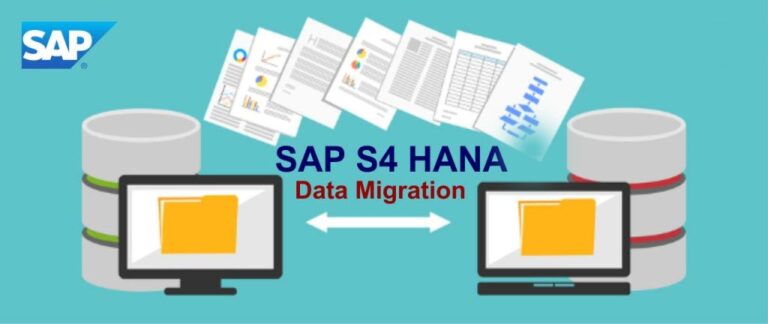
In today’s fast-paced business landscape, enterprises are continuously seeking ways to streamline their operations and unlock the full potential of their data. One transformative leap in this direction is the migration to SAP S4 HANA, an advanced enterprise resource planning (ERP) suite that promises increased speed, efficiency, and data analytics capabilities. However, this migration process can be complex and time-consuming if not executed meticulously. In this blog, we will delve into the strategies and detailed examples that can supercharge your S4 HANA data migration journey.
Data Assessment and Cleanup: Laying the Foundation
The first step in any successful data migration endeavor is to assess your existing data. This involves identifying redundant, obsolete, and trivial (ROT) data that only hampers the migration process. By cleaning up your data before migration, you not only ensure a smoother transition but also prevent the transfer of irrelevant information.
Example: Imagine a retail company migrating to S4 HANA. Before the migration, they conduct an in-depth analysis of their product catalog. They identify products that haven’t been sold in the last five years and eliminate them from the migration scope. This results in a leaner dataset, minimizing migration time and effort.
Define Clear Data Ownership
Assigning data ownership not only streamlines the migration process but also ensures accountability. When different teams are responsible for their data subsets, data cleansing and validation become more efficient.
Data Mapping and Transformation: Precision Matters
Accurate data mapping is pivotal to a successful migration. Every business required data field in your legacy system must find its rightful place in S4 HANA. This involves transforming data formats, aligning field names, and ensuring data consistency.

Parallel Processing: Unleashing the Power
One surefire way to expedite data migration is by employing parallel processing. Instead of migrating data sequentially, you can split the workload into multiple parallel tasks, significantly reducing the time taken.
Example: An international logistics company is transitioning to S4 HANA. Instead of migrating customer data for each region separately, they split the migration into parallel tasks for each geographic region. This slashes migration time while maintaining data integrity.
Selective Data Migration: Focus on Essentials
Not all data needs to be migrated immediately. By adopting a selective data migration approach, you can prioritize critical data and migrate non-essential data later.
Example: A financial institution is upgrading to S4 HANA. Instead of migrating historical transaction records spanning a decade, they opt to migrate only the last three years of data initially. This accelerates the migration process and allows the institution to focus on recent data analysis.
Automating Data Validation: Ensuring Accuracy
Manually validating migrated data is time-consuming and error-prone. Leveraging automation tools for data validation ensures data accuracy without the tedious manual effort.
Example: A healthcare provider is moving to S4 HANA. They implement automated scripts to validate patient records, ensuring that personal and medical information is accurately migrated and intact.
The Data Migration Experts Advantage
Amidst the intricacies of S4 HANA data migration, partnering with a skilled team can be a game-changer. This is where Data Migration Experts step in. With a proven track record of simplifying complex data migration processes, we combine our in-depth understanding of S4 HANA with cutting-edge tools to ensure a seamless transition. Our data assessment, mapping, and transformation techniques, coupled with parallel processing and selective migration strategies, result in a swift and successful migration journey.
In conclusion, the journey to S4 HANA holds immense promise for businesses, but the process itself requires careful planning and execution. By assessing, cleaning, mapping, and selectively migrating data, and by leveraging automation and parallel processing, you can turbocharge your S4 HANA data migration. And when you’re ready to make this transition, remember that Data Migration Experts are here to guide you through the complexities, ensuring a fast and efficient migration that propels your business into the future.
